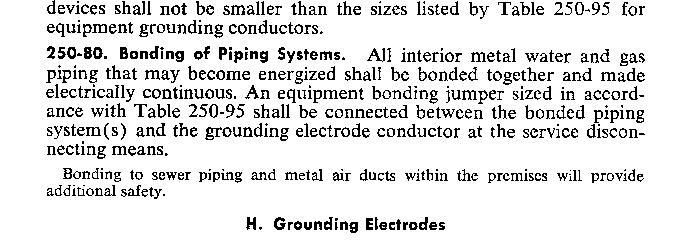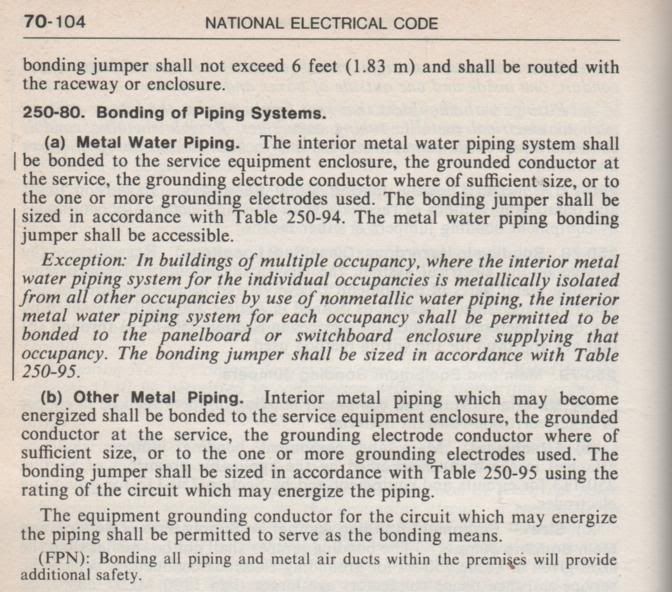kwired
Electron manager
- Location
- NE Nebraska
- Occupation
- EC
The Electrical Inspector must pass the inspection. Since the fittings "?Meet UPC, IPC and cUPC requirements." it would go to the AHJ to decide where if any 'jumpers' would be required.
I have some SharkBites around. I'll have to look at them and see what I think about the electrical continuity.
But you are describing an electrical inspector determining whether a plumbing piping system is suitable for the application. Not his jurisdiction unless he is also the plumbing inspector but still not under the electrical part of his title. As an electrical inspector he should only be determining if this is a metal piping system or not. If it is a metal piping system then insulating fittings need bonding to ensure the continuity of the system.PS This is what the AHJ would be looking at:
114.1 Approved materials, products, assemblies and methods of construction.
Materials, products, assemblies and methods of construction approved by the building official shall be constructed and installed in accordance with such approval. Materials, devices, products and assemblies listed in directories indicated in Table 114.3 are authorized for use when:
1. Approved by the building official;
2. Installed/used in accordance with the listing;
3. The listing is current; and,
4. The extent of the listing does not include in its scope, elements of design, construction or installation otherwise in conflict with the provisions of this code such as fire-resistance, structural design, etc.
What if this were just the opposite - all non metallic piping with metallic fittings? That does happen with some PEX piping systems.





